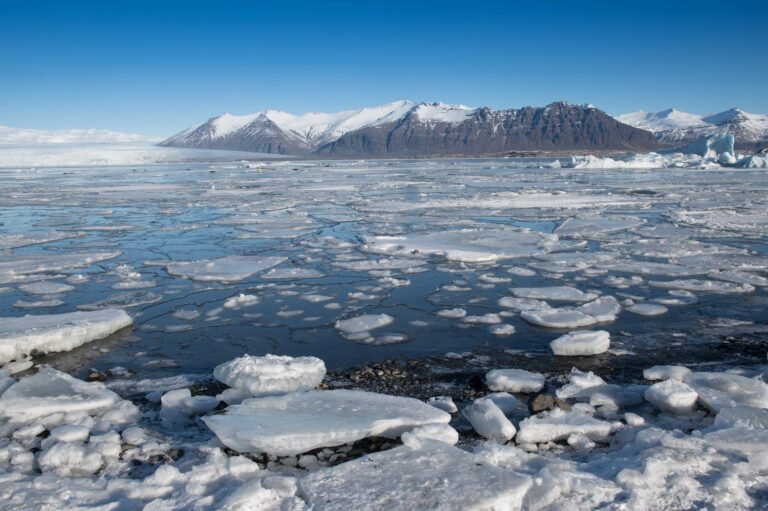Worldsfeed News Desk: Changes in North Atlantic waters affect the temperature of the Arctic Ocean. Scientists have named this process Atlantification of Arctic Ocean. This is the reason why the Arctic Ocean ice has melted in large quantities since 2007. This has also affected the Indian monsoon.
Scientists say that the Atlanticization of the Arctic Ocean has happened due to the Arctic Dipole. Due to this, the snow will melt further in the coming time. The Arctic Dipole is a pressure pattern. This creates high pressure over the Arctic regions of North America and low pressure over the Arctic regions of Eurasia.
Due to the Arctic Dipole, southern winds rapidly reach the Arctic Ocean and due to this the ice there melts rapidly. This is what happened in 2007. Then 4.13 million square kilometers of ice had melted. According to a report, 12.6% of the Arctic ice is melting every 10 years.
There are two reasons for the increasing heat in the Arctic:
First- Sea water is darker in color than ice, hence it absorbs more heat and releases less. This causes more ice to melt and as the water rises, more heat is absorbed, which melts more ice. This vicious circle keeps increasing. This is why the Arctic has been warming twice as fast for decades as the rest of the Earth.
Secondly, most of the land in the Arctic is always frozen in ice. This is called permafrost. A lot of organic matter is trapped in it, which contains half of the world’s carbon. Their melting releases carbon dioxide, due to which the snowfall season is decreasing and the duration of forest fires is increasing. If the ice melts, it can come out in the form of carbon dioxide and methane (which is a more effective greenhouse gas than carbon dioxide) due to fire or decomposition. This will directly increase global warming.
The speed of ocean currents will also slow down, because the melting of Arctic ice will reduce the salinity of the water flowing north from the tropics, due to which its density will reduce and it will not sink into the depths of the ocean for the return journey. The slowing down of sea currents is affecting the Indian monsoon and El Nino patterns in the Pacific Ocean. The most frightening possibility is damage to the ice on Greenland.
Disasters like stormy rains, floods and cloud bursts will increase in India.
The entire region of the Indian subcontinent i.e. from Bangladesh to Afghanistan via Nepal, Southern China and India is continuously facing disasters like stormy rains, floods and cloud bursts. These incidents will increase further in the coming times. Reason…rapid melting of ice of Arctic glaciers.
The sources of moisture in India are the south and west regions. But since some years, moisture is also reaching India from the Arctic Pole. The reason for this is that the glaciers of the Arctic are being hit the hardest by climate change. While global warming in the world has been 1.5 degrees, warming in the Arctic has been measured up to 4 degrees. The snow is melting rapidly and the winds carrying its moisture are blowing rapidly in the north and south of the Himalayas.
When these cold winds collide with the hot winds of low-lying areas, a storm is formed. Therefore, the possibility of stormy rains and floods has started increasing in India. Due to depletion of forests, rains are washing away the land and filling the rivers. Therefore even a little rain turns into a flood.
Arctic glaciers may disappear by 2030
A research has revealed that the glaciers of the Arctic Ocean may completely disappear by 2030, that is, after seven years, no ice will be seen here in summer. The Arctic is warming four times faster than the rest of the world. In the last 40 years, the multi-layer ice that remains after summer has reduced from 70 lakh square km to only 40 lakh square km.
According to research, the glaciers near Svalbard in the Arctic and Barents and Kara Sea in Russia melted due to natural process. Because the ends of these glaciers meet the sea present here.


0 Comments